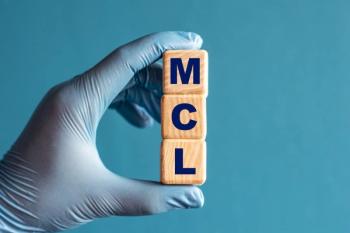
Bimekizumab for Hidradenitis Suppurativa Offers Durable Disease Control in Long-Term Data
Key Takeaways
- Bimekizumab effectively inhibits IL-17A and IL-17F, crucial cytokines in hidradenitis suppurativa, providing durable treatment outcomes.
- Over 85% of patients maintained their response to bimekizumab over 2 years, with significant disease severity reduction.
New 2-year data show the long-term effects of bimekizumab on hidradenitis suppurativa, indicating its potential as a valuable treatment option for patients.
Bimekizumab (Bimzelx; UCB) demonstrated efficacy in hidradenitis suppurativa through its unique dual inhibition, offering a durable treatment option for patients with the chronic skin condition, according to data presented at the 14th Conference of the European Hidradenitis Suppurativa Foundation (EHSF) in Vilnius, Lithuania.1
“These two-year data offer hope for long-term disease management and reduced burden for [hidradenitis suppurativa] patients," EHSF President Christos C. Zouboulis, MD, PhD, said in a statement, highlighting bimekizumab's ability to provide sustained disease control.
Bimekizumab, a humanized monoclonal IgG1 antibody, selectively inhibits both IL-17A and IL-17F, 2 key cytokines that drive inflammatory processes. Typically, lesional psoriatic skin and lesional skin in hidradenitis suppurativa have elevated levels of IL-17A and IL-17F.
Researchers pooled data from the BE HEARD 1 (NCT04242446) and 2 (NCT04242498) studies and BE HEARD extended (NCT04901195). The BE HEARD 1 and 2 study focused on evaluating the efficacy and safety of bimekizumab among study participants with moderate to severe hidradenitis suppurativa.2,3
Both studies had a combined enrollment rate of 1014 participants.1 In the BE HEARD 1 and 2 trials, patients were randomized 2:2:2:1 (initial, 16 weeks; maintenance, 32 weeks) to bimekizumab 320 mg every 2 weeks, 4 weeks, or a combination. Patients became eligible for the open-label extension after completing week 48.
Of the 556 participants who entered the open-label extension study, 446 patients completed week 96. The purpose of the BE HEARD EXT study was to evaluate the safety of long-term therapy of bimekizumab among patients with moderate to severe hidradenitis suppurativa.4
Physicians administered 320 mg of bimekizumab to participants in the BE HEARD EXT study every 2 weeks or every 4 weeks, depending on their hidradenitis suppurativa clinical response (≥ 90%).1 Regulatory agencies approved a dose of 320 mg of the drug every 2 weeks up to week 16, and every 4 weeks thereafter.
More than 85% of patients maintained their response to bimekizumab across a range of end points over 2 years. Patients shifted from severe to mild and moderate disease over 2 years from baseline to new disease level (mild, 0% to 53.1%; moderate, 12.6% to 26.5%; severe, 87.4% to 20.4%). Bimekizumab reduced the average draining tunnel count over 2 years.
Patients saw gradual improvement to no or mild symptom severity, improving their health-related quality of life (QOL) over 2 years. This finding suggests bimekizumab durably controls symptoms that profoundly and negatively affect patients' QOL.
Bimekizumab is approved to treat plaque psoriasis, psoriatic arthritis, axial spondylarthritis, and hidradenitis suppurativa. Amongst all disease states treated, upper respiratory tract infections (plaque psoriasis, 14.5%; psoriatic arthritis, 14.6%; axial spondylarthritis, 16.3%; hidradenitis suppurativa, 8.8%) and oral candidiasis (7.3%, 2.3%, 3.7%, 5.6%, respectively) occurred most frequently as adverse events with bimekizumab. Across all bimekizumab studies, patients experienced oral candidiasis, tinea infections, ear infections, herpes simplex infections, oropharyngeal candidiasis, gastroenteritis, folliculitis, vulvovaginal mycotic infection, headache, rash, dermatitis and eczema, acne, injection site reactions, and fatigue as common adverse reactions.
“Sustained flare control, maintenance of response and improvement across multiple measures of disease severity through two years show how bimekizumab can transform outcomes for people living with [hidradenitis suppurativa],” stated Fiona du Monceau, executive vice president, head of patient evidence at UCB.
References
- Bimzelx (bimekizumab) two-year data at EHSF 2025 demonstrate sustained disease control in hidradenitis suppurativa (HS). News release. UCB. February 12, 2025. Accessed February 13, 2025.
https://www.ucb.com/newsroom/press-releases/article/bimzelxrvbimekizumab-two-year-data-at-ehsf-2025-demonstrate-sustained-disease-control-in-hidradenitis-suppurativa-hs - A study to evaluate the efficacy and safety of bimekizumab in study participants with moderate to severe hidradenitis suppurativa (BE HEARD I). National Library of Medicine. January 9, 2025. Accessed February 13, 2025.
https://clinicaltrials.gov/study/NCT04242446 - A study to evaluate the efficacy and safety of bimekizumab in study participants with moderate to severe hidradenitis suppurativa (BE HEARD II). National Library of Medicine. December 5, 2024. Accessed February 13, 2025.
https://clinicaltrials.gov/study/NCT04242498 - A study to test the long-term treatment of bimekizumab in study participants with moderate to severe hidradenitis suppurativa (BE HEARD EXT). January 31, 2025. Accessed February 13, 2025.
https://clinicaltrials.gov/study/NCT04901195
Newsletter
Stay ahead of policy, cost, and value—subscribe to AJMC for expert insights at the intersection of clinical care and health economics.







































